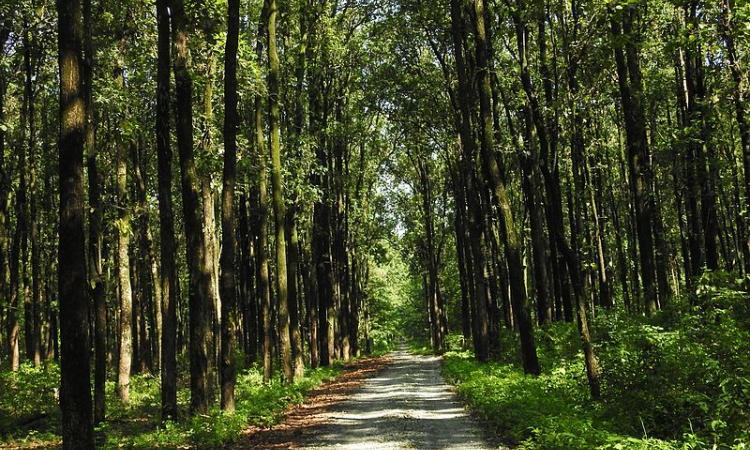
Van Mahotsava is an annual tree planting festival which was initiated by Shri Kulapati Kanaiyalal Munshi, the Union Minister for Agriculture and Food, Government of India, in 1950 to create awareness about the importance of trees and conservation of forests. Since then, this plantation drive has been bringing multitudes of people across the country towards the common goal of increasing green cover. The idea to organize such an annual event might have emerged after a national tree plantation drive in 1947 in which national leaders like Dr. Rajendra Prasad and Pandit Jawaharlal Nehru had actively participated.
As the onset of monsoon in India usually begins in the first week of July, this week is considered ideal for tree plantation. So Van Mahotsava is usually a week-long festival. Trees planted in this season have more chances of survival as the heat is less and there is a lot of moisture in the air and soil.
Generally, native trees are planted which can adapt well to the local conditions and which can survive and flourish on their own. Also, the idea is that native trees support a variety of local birds, animals and insects.
Although India has been taking up tree plantation programmes in a big way since 1950, the question remains - why do we still not have sufficient area under tree cover, after almost seven decades?
According to the India State of Forests Report, 2017, the total forest cover is 708,273 square kilometers, which is 21.54% of the total area of our country. For a healthy environment, we should have at least 33% of our geographical area under forest cover.
One of the reasons for the poor survival rate of the plants grown could be lack of proper planning for plantation. This includes selection of wrong species of plants to be grown, poor quality of soil, seeds or saplings, inadequate pit size, lack of soil moisture, grazing of tree saplings by the animals, etc. However, the major cause of insufficient forest cover seems to be ruthless cutting of trees in the name of urbanization and development.
According to the state-wise summary report of forest land diversion projects approved under the Forest Conservation Act 1980 during the last 30 years, we have lost nearly 20,000 square kilometres of forest cover due to encroachments and industrial projects alone. Since 2000, the state of Uttarakhand has lost nearly 44,518 hectares of its forest cover to fires.
Globally, 289 million hectares of tropical forests, equivalent to the size of India will be cleared between 2016 and 2050, if conservation measures are not taken immediately, as per a report by Centre for Global Development.
For every tree fallen, ten tree saplings should be planted to make up for the loss. Society needs to be made aware of the dire need for good tree cover. Besides, area specific selection of the plant species to be grown and sites for plantation in addition to proper care of saplings is also critical for some time after planting, to increase their rate of survival.
According to some sources, a mature tree produces enough oxygen for 10 people to inhale annually. Trees are revered in Indian culture for their medicinal benefits, for providing food, for moderating and balancing ambient temperatures, for providing shade and shelter and for recharging groundwater. They act as carbon sinks too, which means good tree cover can play a key role in reducing global warming.
All these benefits that we get from trees are essential for the existence of all life, including human beings, animals, insects, birds and microorganisms.
Trees have aesthetic and economic value too. They add beauty to the surroundings. Lush green surroundings enhance tourism. If a tree is cut, it will yield us considerably less benefits as compared to a living tree.
So let us all plant some trees this Van Mahotsava and continue to do so every year.
Space should not be a constraint for growing trees or shrubs. If they cannot be grown outside, several varieties of fruiting and flowering plants like hybrid mangoes, papaya, fig, chiku, lemon, conifers, Japanese maple, banyan, rubber etc. can be easily grown in big pots or discarded drums and kept just outside the house, on the terrace or in the balcony. This way, you can have the pleasure of eating your own fruits after a few years. Besides, some plants like Aloevera, Areca Palm, Ficula, Ivy, Spider, Snake plant and Tulsi are a must at home as they help a lot in purifying indoor air. Involve your children in this activity. Let them select the plants and nurture them.
So which tree are you planning to grow this year?
Anita Sharma works with the People’s Science Institute, a non-profit research and development organization based at Dehradun.
Disclaimer: The views and opinions expressed in this article are those of the author and do not necessarily reflect the policy or position of India Water Portal.
/articles/go-green-van-mahotsava